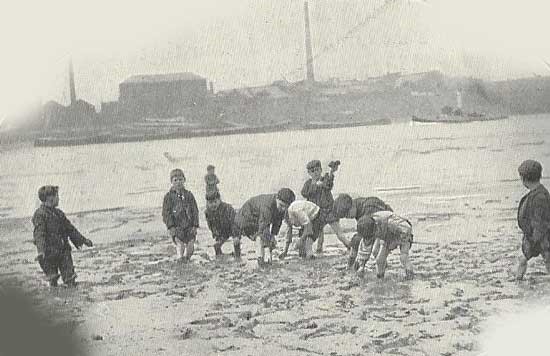Digital mudlarking
Author: mweller
Go to Source

I spend too long and for too little benefit thinking about ed tech as a field/discipline/subject/hot mess for it to be healthy. I am not as interested in the business of ed tech but rather what it feels like as a practitioner in a university or college. One of the things that often strikes me is that terms we use for other areas don’t quite fit: as we discussed before, discipline isn’t right, and that is how we tend to frame much of higher education. So I end up trawling around for metaphors, like suitcases.
Here is another then, that of mudlarking. I was enamoured by the stories my mother (a cockney) told me of growing up using the Thames as a beach, playground and treasure trove, so I always found the idea of mudlarks intriguing. Mudlarks have a decidedly Dickensian feel, but we shouldn’t let the romantic images of this detract from the dangerous and decidedly grim reality, as this post reminds us. Wikipedia describes a mudlark as:
A mudlark is someone who scavenges in river mud for items of value, a term used especially to describe those who scavenged this way in London during the late 18th and 19th centuries
I read Lara Maiklem’s hugely enjoyable and informative book on modern mudlarking recently and it got me thinking about ed tech as discipline again (seriously, there is nothing I won’t bend into that service). There are a few useful aspects of the analogy that help us (okay, me) think about ed tech.
One of the elements about ed tech that makes the idea of a discipline an ill fit is that it does not have the foundations of other disciplines. People come into it from different fields, what it actually is may not be clearly defined, and there is no shared sense of history. So thinking about a history of ed tech is less akin to the archeological dig one might undertake in other fields. It is also very dynamic and constantly in flux. If you are an ed tech practitioner then, the sense is less of a excavation, and more one of hurried gathering. Ed tech practitioners operate like mudlarks, gathering artefacts that have been exposed by the last technology tide (see below reservations on this). These artefacts can be seen as nuggets of good practice, research or concepts that have application across different technology. Things like how to support learners at a distance, how to effectively encourage online dialogue, ethics of application, etc.
Over the past 20 years we have seen the initial elearning interest, web 2.0, MOOCs, AI and data as substantial trends in ed tech. We can view each of these as tides, depositing knowledge artefacts that will be washed away by the next big wave, unless they are carefully gathered and restored by the digital mudlarks. After each of these waves there is a space momentarily revealed, where reflection and research can be found. These artefacts are shaped by the tide, but have value and currency independently. The trouble with ed tech is that it doesn’t value them, it only recognises the tide and so each time these contributions are forgotten or lost.
Metaphors are also interesting for where they don’t quite fit. One aspect of this one I am uncomfortable with is some of the connotations of a tide. It plays into notions of technological change as inevitable and irresistible. We could argue that it is our job to shape the direction or flow of the tide as much as to gather what is deposited. I fully acknowledge this weakness, but would also add that as a practitioner it sometimes does feel like a tide – you have little say on whether your VC is going to adopt MOOCs, say. So what you need to do is ensure value can be gathered from it, and that is preserved and shared.
